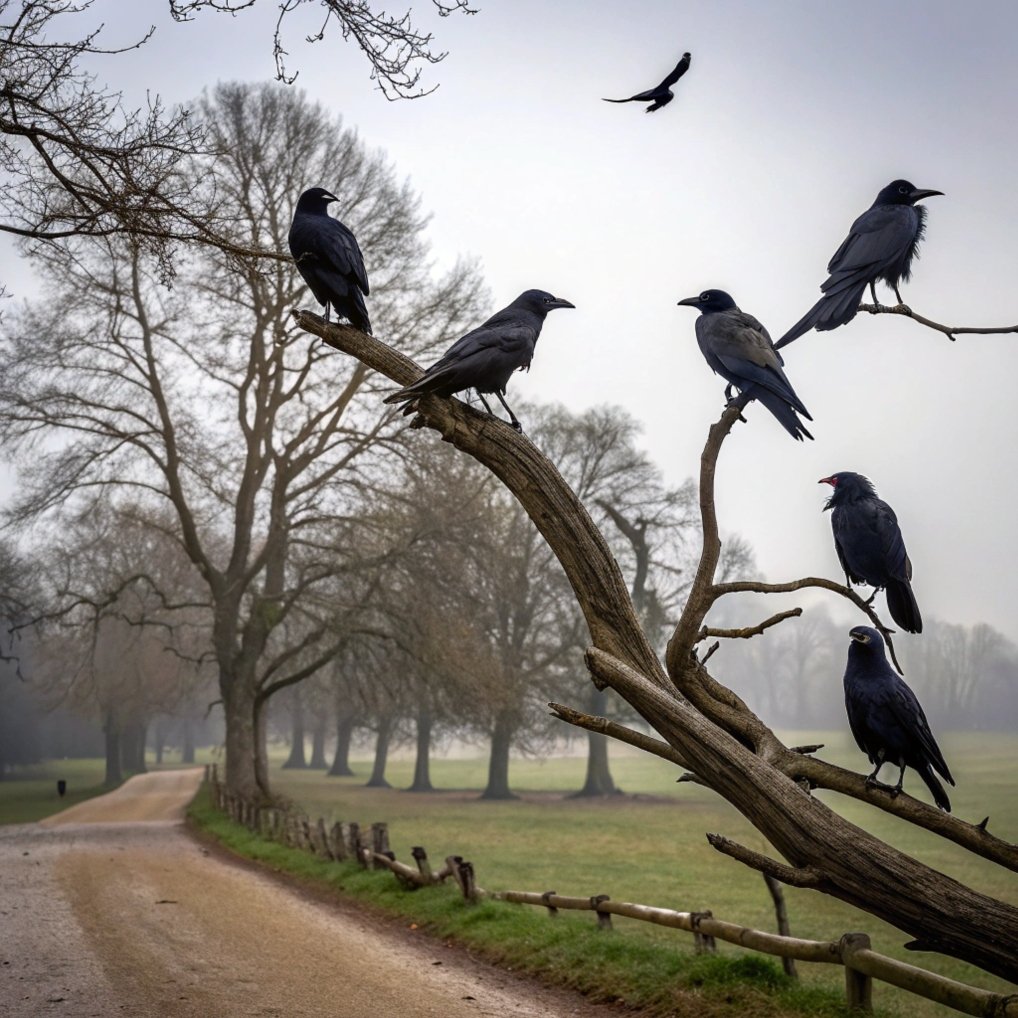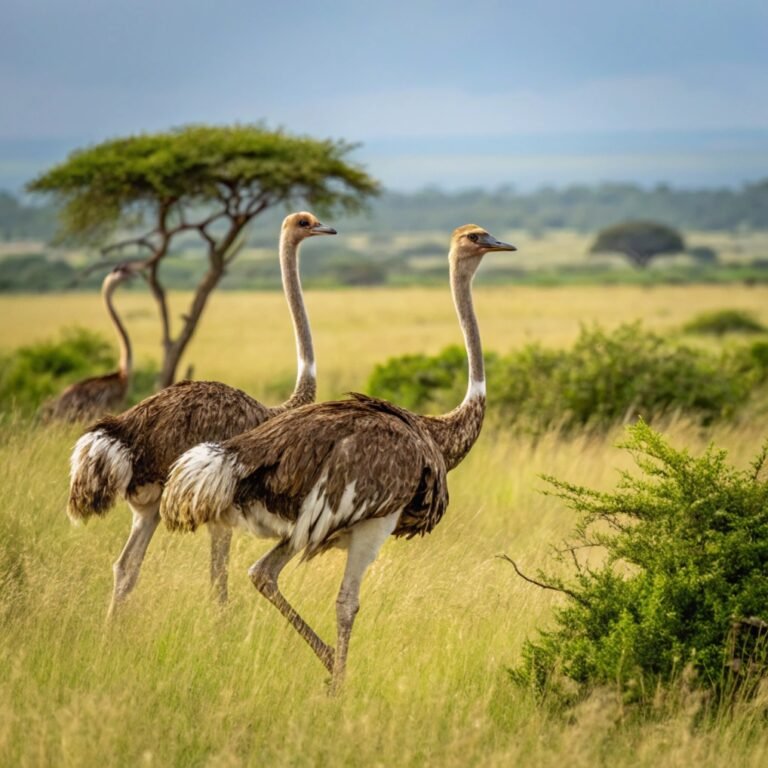The Origins Behind the Term “Murder” for a Group of Crows: Mysterious and Fascinating History
In the realm of ornithology and popular culture, few collective nouns have captured the imagination quite like “a murder of crows.”
This intriguing phrase, steeped in medieval lore and superstition, has persisted through centuries, adding a layer of mystery to these intelligent black birds.
As we delve into the origins of this curious collective noun, we’ll uncover a rich tapestry of history, folklore, and scientific observation that has shaped our perception of crows.
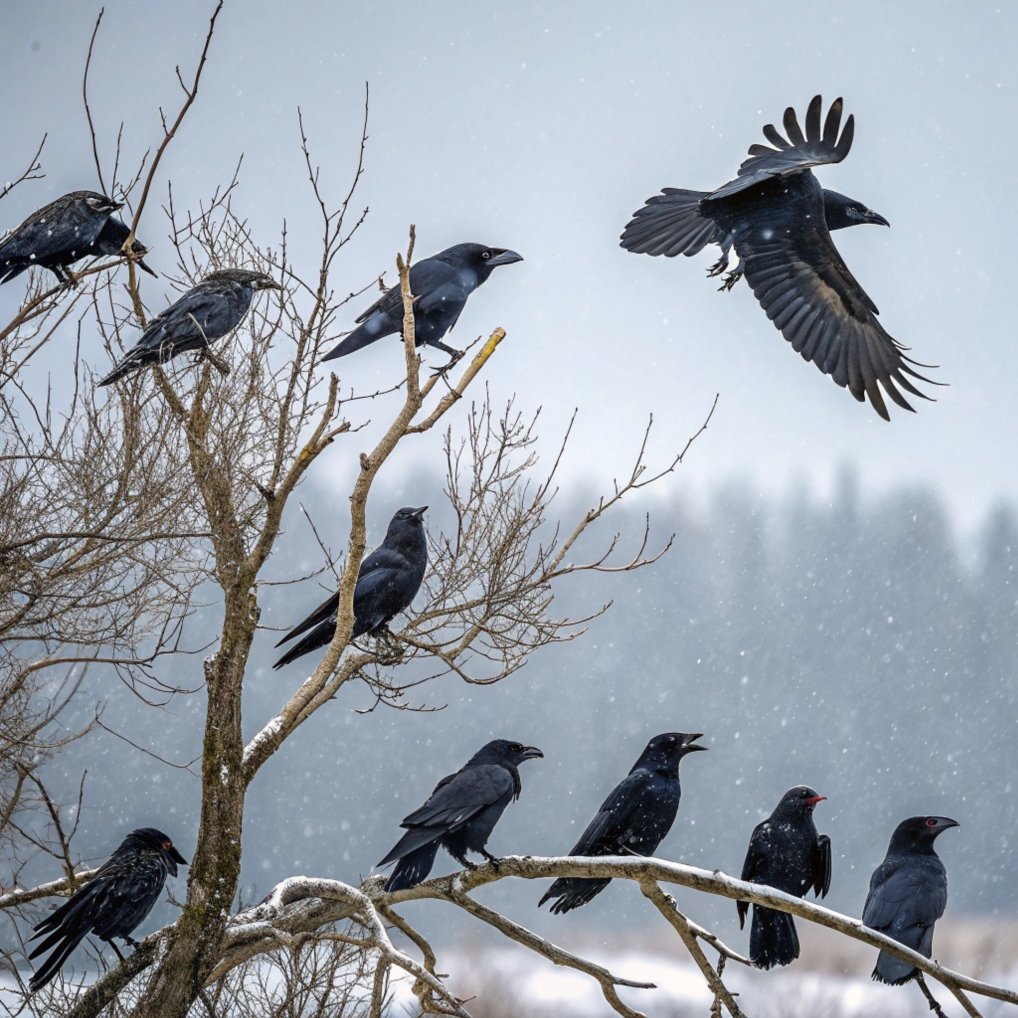
Key Takeaways:
- Medieval Origins: The term “murder” for crows originated in the 15th century, alongside other colorful animal collective nouns.
- Folklore Connection: The phrase is deeply rooted in superstition and folklore, often associating crows with death and ill omens.
- Scavenging Behavior: Crows’ tendency to feed on carrion contributed to their macabre reputation and the “murder” moniker.
- Intelligence Factor: Crows’ high intelligence may have influenced perceptions of them as capable of complex social behaviors, including “judging” their own.
- Cultural Significance: Crows play important roles in various mythologies and cultures, often as tricksters or wise messengers.
- Literary Impact: Works like Edgar Allan Poe’s “The Raven” have reinforced the mysterious image of corvids in popular culture.
- Scientific Reality: While “murder” is a poetic term, scientists prefer “flock” or “group” when referring to crows.
- Ecological Importance: Despite their reputation, crows play crucial roles in ecosystems as scavengers and pest controllers.
- Alternative Terms: Other collective nouns for crows include “horde,” “muster,” and “storytelling,” each with its own connotations.
- Observational Tips: Crows can be observed in various habitats, but should be approached with respect due to their intelligence and wariness.
- Evolutionary Adaptability: Crows’ problem-solving skills and social structures have allowed them to thrive in diverse environments, including urban areas.
- Linguistic Evolution: The persistence of colorful collective nouns like “murder of crows” reflects ongoing human fascination with creatively describing nature.
This fascinating blend of history, folklore, and scientific observation surrounding the term “murder of crows” highlights the complex relationship between humans and these remarkable birds, inviting us to look beyond the surface and appreciate the depth of our natural world.
The Intriguing Collective Noun for Crows
The term “murder“ as a collective noun for crows has captivated the imagination of many.
This unusual and somewhat sinister designation has its roots in medieval times and is steeped in folklore and superstition.
While the official term for a group of crows is a “flock,” the poetic term “murder” has persisted through the centuries, adding an air of mystery to these intelligent birds.
The origin of this collective noun is closely tied to the scavenging nature of crows and their association with death in various cultures.
Crows, along with other corvids, have long been observed near battlefields, cemeteries, and gallows, feeding on carrion.
This behavior led to the development of various superstitions and folklore surrounding these birds.
The presence of crows in such morbid settings likely contributed to their reputation as harbingers of doom and their collective noun’s macabre connotation.
It’s important to note that while “murder” is a widely recognized term for a group of crows, it is not used in scientific literature. Ornithologists and other scientists prefer to use more neutral terms like “flock” or “group” when referring to multiple crows.
The Medieval Origins of Animal Collective Nouns
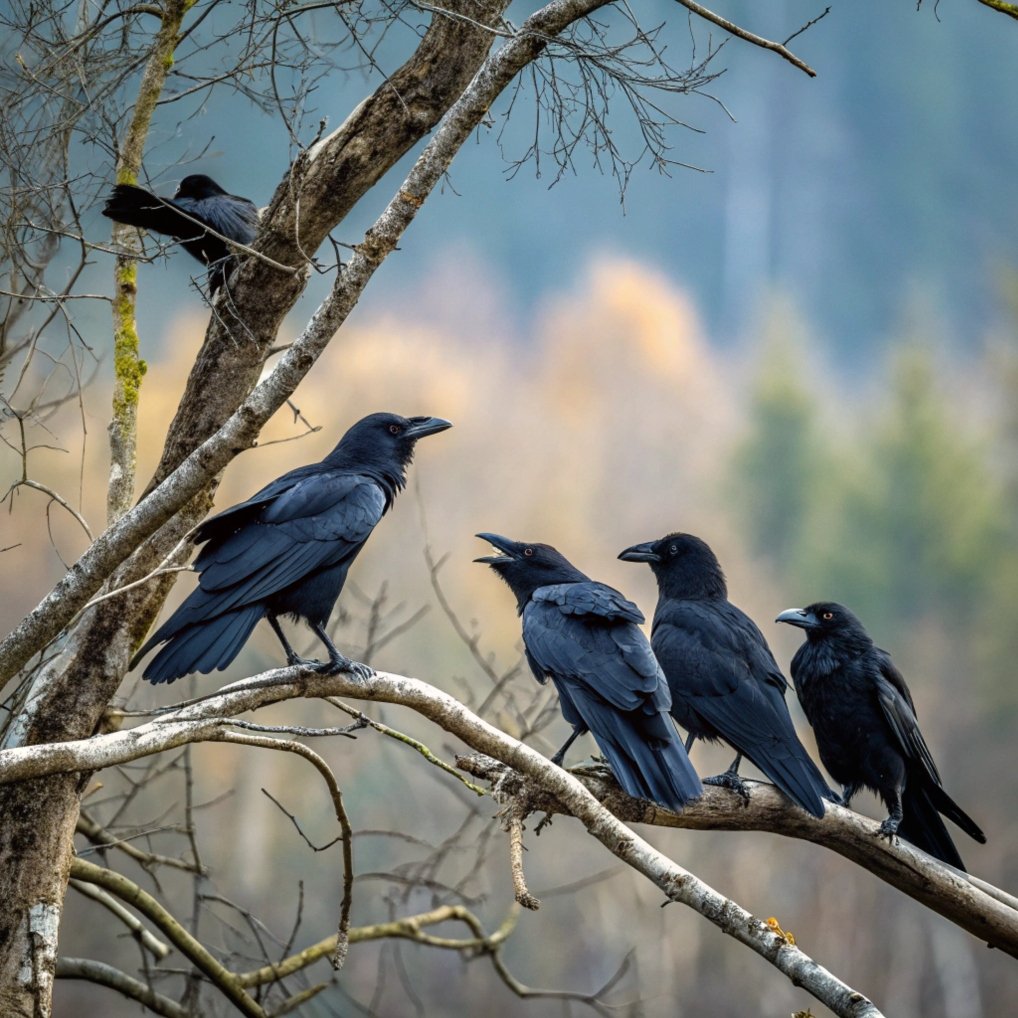
The practice of assigning colorful and often whimsical collective nouns to groups of animals can be traced back to the Middle Ages.
During this period, hunting was not merely a sport or means of procuring food for the aristocracy; it was an important measure of privilege and nobility.
The specialized vocabulary used in courtly hunting, known as “terms of venery,” included specific terminology for various aspects of the hunt, including the animals, their body parts, stages of the chase, and the behavior of hunting hounds.
Two significant manuscripts from the mid-1400s, the Egerton Manuscript and The Book of St. Albans, list many of the collective nouns still in use today.
These include terms such as a “charm of goldfinches,” a “pride of lions,” and, of course, a “murder of crows.” It’s worth noting that while goldfinches are indeed charming birds, the word “charm” in this context actually derives from the Old French word for “song.”
The tradition of inventing collective nouns has continued into modern times, with creative examples like a “wunch of bankers” and a “book of Mormons” emerging in recent years.
The Scavenging Nature of Crows and Its Impact on Their Reputation
The scavenging behavior of crows has played a significant role in shaping their reputation and, consequently, their collective noun.
Crows are opportunistic feeders and will consume carrion as well as prey on small animals, eggs, and baby birds.
Historically, crows and other corvids would have been a common sight near battlefields, medieval hospitals, and execution sites, waiting for an opportunity to feed on the remains of the dead.
This association with death and decay led to the development of various superstitions and folklore surrounding crows. In many cultures, the appearance of crows was seen as an omen of death or impending doom.
The birds’ black plumage and their tendency to gather in large, noisy groups further contributed to their somewhat sinister reputation.
It’s important to note that while crows’ scavenging behavior may have contributed to their macabre collective noun, this behavior actually plays a crucial role in ecosystems by helping to clean up carrion and prevent the spread of disease.
Folklore and Superstitions Surrounding Crows
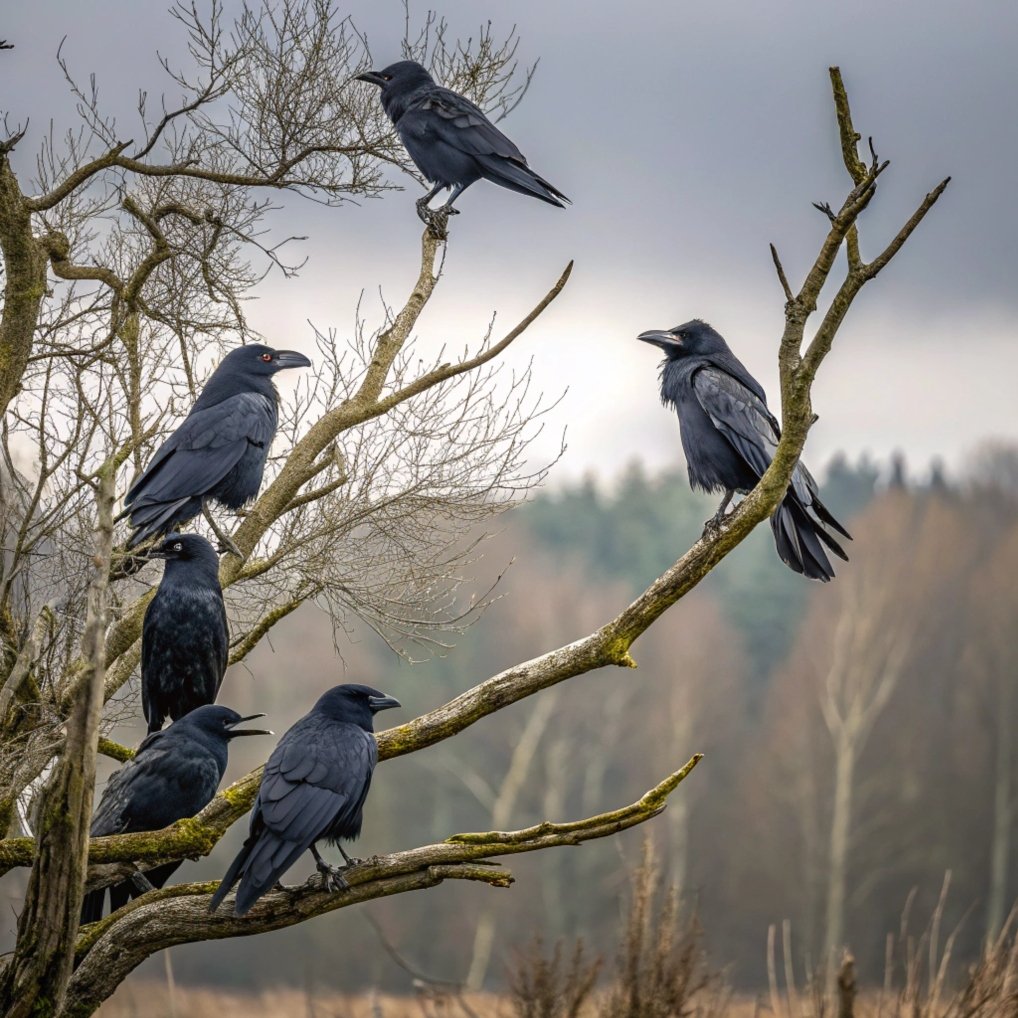
The term “murder” for a group of crows is deeply rooted in folklore and superstition. One particularly intriguing tale suggests that crows form tribunals or parliaments to judge and punish the bad behavior of a member of the flock.
According to this story, if the verdict goes against the defendant, that bird is murdered by the rest of the flock.
While there is likely a grain of truth in this tale – crows have been observed occasionally killing weak or dying crows that encroach on their territory – there is no scientific evidence to support the idea that crows routinely perform capital punishment on their own species.
Another common superstition associated with crows is the belief that they peck out the eyes of their “victims” to attain their excellent vision.
This gruesome imagery likely contributed to the perception of crows as agents of death with murderous intentions, rather than simply efficient scavengers.
The Intelligence of Crows and Its Relation to Their Collective Noun
Despite their somewhat sinister reputation, crows are now recognized as highly intelligent birds. This cognitive ability may have played a role in the development of their collective nouns, including “murder” and “parliament.”
The term “parliament” is also used to describe a group of owls, which have long been associated with wisdom dating back to Ancient Greece.
Crows demonstrate problem-solving skills, tool use, and even the ability to recognize human faces. They have been observed using traffic to crack nuts, fashioning tools from wire to retrieve food, and holding “funerals” for their dead.
This intelligence, combined with their tendency to gather in large, vocal groups, may have led medieval observers to imagine them engaged in complex social behaviors like forming tribunals or telling stories.
The collective noun “storytelling of crows” is less common but equally intriguing. While its origin is uncertain, it may be related to the birds’ loud vocalizations and social behavior.
Crows are known for their varied calls and apparent communication within their groups, which could have been interpreted as storytelling by imaginative observers.
Other Collective Nouns for Crows
While “murder” is perhaps the most well-known collective noun for crows, it is by no means the only one. Several other terms have been used throughout history to describe groups of these intelligent birds. Some of the more common alternatives include:
- Flock: This is the most scientifically accurate and widely used term for a group of crows.
- Horde: Often used to describe a large group or gathering of crows, particularly when they are not engaged in specific activities.
- Muster: Another term that can be applied to a group of crows, though it’s less common than “flock” or “murder.”
Other collective nouns for crows include brood, cauldron, clan, and company. Each of these terms brings its own connotations and imagery, contributing to the rich tapestry of language surrounding these fascinating birds.
The Role of Crows in Various Cultures and Mythologies
Crows have played significant roles in various cultures and mythologies around the world, often influencing how they are perceived and described.
In many Native American traditions, the crow is seen as a trickster figure, both clever and mischievous. This aligns well with the birds’ observed intelligence and problem-solving abilities.
In Norse mythology, two ravens named Huginn and Muninn (thought and memory) are associated with the god Odin.
These birds fly around the world, bringing information back to the god. This connection between corvids and knowledge or wisdom is reflected in some of the collective nouns used for crows, such as “parliament.”
In some Asian cultures, crows are associated with ancestral spirits or considered divine messengers.
These more positive associations contrast with the often negative perceptions in Western folklore, demonstrating the diversity of cultural attitudes towards these birds.
The Impact of Literature and Popular Culture on Crow Perception
Literature and popular culture have played a significant role in shaping public perception of crows and reinforcing their association with mystery and darkness.
Perhaps the most famous literary crow is found in Edgar Allan Poe’s poem “The Raven,” which features a talking raven (a close relative of the crow) repeating the word “Nevermore.”
This poem has had a lasting impact on the popular image of corvids as harbingers of doom or loss.
In more recent times, crows have appeared in various forms of media, often portrayed as intelligent and somewhat mysterious creatures.
Films, books, and television shows have featured crows in roles ranging from wise mentors to sinister omens, further cementing their place in the public imagination.
The persistent use of the term “murder of crows” in popular culture has also contributed to its widespread recognition, even among those who may not be familiar with its historical origins.
Scientific Perspectives on Crow Behavior and Intelligence
While folklore and popular culture have contributed significantly to the perception of crows, scientific research has provided valuable insights into their behavior and intelligence.
Studies have shown that crows possess cognitive abilities comparable to those of great apes in many respects. They can use tools, solve complex problems, and even recognize individual human faces.
Crows have been observed engaging in behaviors that suggest a high level of social intelligence. They form strong family bonds, with offspring often staying with their parents to help raise younger siblings.
This cooperative breeding behavior is relatively rare among birds and may contribute to the development of their cognitive abilities.
Research has also shown that crows can hold “funerals” for their dead, gathering around fallen comrades in what appears to be a form of mourning or information sharing about potential dangers.
While this behavior is not fully understood, it demonstrates a level of social complexity that may have contributed to the rich folklore surrounding these birds.
The Significance of Crows in Ecosystems
Despite their sometimes negative reputation, crows play important roles in many ecosystems. As omnivores and scavengers, they help to clean up carrion and control populations of insects and small mammals.
Their intelligence and adaptability have allowed them to thrive in a wide range of habitats, including urban environments.
Crows are also known to have complex social structures and communication systems. They use a variety of calls to convey different messages, from warnings about predators to announcements of food sources.
This sophisticated communication, combined with their problem-solving abilities, allows crows to adapt quickly to changing environments and challenges.
In some areas, crows have been observed dropping nuts onto roads to crack them open, then waiting for traffic lights to change before safely retrieving the exposed nut meat.
This behavior demonstrates not only their intelligence but also their ability to take advantage of human-made structures and systems.
The Evolution of Collective Nouns and Their Modern Usage
The use of collective nouns for animals, including the term “murder” for crows, has evolved over time. While these terms originated in medieval hunting traditions, they have persisted in language largely due to their poetic and evocative nature.
In modern times, collective nouns are often used more for their literary or humorous value than for practical description.
It’s worth noting that while terms like “murder of crows” are widely recognized, they are not typically used in scientific contexts.
Ornithologists and other researchers generally prefer more neutral terms like “flock” or “group” when discussing crows in a scientific capacity.
However, the persistence of these colorful collective nouns in popular culture and everyday language demonstrates the enduring human fascination with categorizing and describing the natural world in creative ways.
Observing and Appreciating Crows in the Wild
For those interested in observing crows and potentially witnessing a “murder” in action, it’s important to approach these intelligent birds with respect and caution.
Crows are known for their wariness of humans and their ability to remember faces, both friendly and threatening.
When observing crows, it’s best to maintain a respectful distance and avoid disturbing their natural behaviors. Crows are most active during daylight hours and can often be seen foraging in open areas, parks, or urban environments.
They are highly vocal birds, and listening to their various calls can provide insights into their communication and social dynamics.
Providing a source of food, such as unsalted peanuts or corn, can attract crows to your yard. However, it’s important to do this responsibly and consistently, as crows may come to depend on this food source.
FAQs
Why is a group of crows called a murder?
The term “murder” for a group of crows originated in the 15th century, likely due to the birds’ association with death and scavenging behavior. It’s a poetic term rooted in folklore and superstition rather than scientific classification.
Do crows actually kill other crows?
While crows may occasionally attack weak or sick members of their species, there’s no evidence that they routinely “murder” each other. The idea of crow tribunals judging and executing other crows is largely a myth.
Are crows intelligent birds?
Yes, crows are considered highly intelligent birds. They demonstrate problem-solving skills, tool use, and the ability to recognize individual human faces. Their cognitive abilities are often compared to those of great apes.
What other collective nouns are used for crows?
Other terms used for groups of crows include flock, horde, muster, parcel, and storytelling. However, in scientific contexts, researchers typically use “flock” or simply “group.”
Are crows considered pests?
While crows can sometimes be perceived as pests due to their adaptability and presence in urban areas, they play important roles in ecosystems as scavengers and pest controllers. Their intelligence and problem-solving abilities have allowed them to thrive alongside human populations.

Hello, I’m Emily Price, the founder of Birds Affection. As a passionate bird enthusiast and spiritual seeker, I’ve always been fascinated by the symbolic meanings and mystical connections between birds and our lives. On this website, I share my knowledge and insights on the spiritual significance of various bird species, exploring their roles as messengers, guides, and teachers. Through my writing, I aim to inspire and educate others on the profound wisdom and beauty that birds bring to our world. Join me on this journey as we delve into the enchanting realm of bird symbolism and discover the hidden meanings behind these magnificent creatures.

